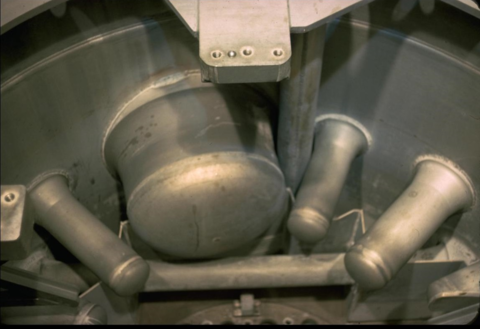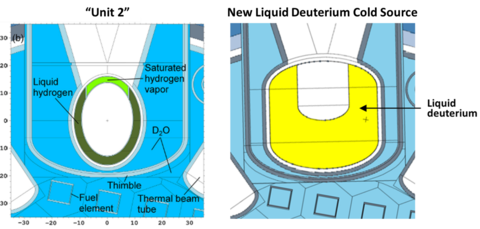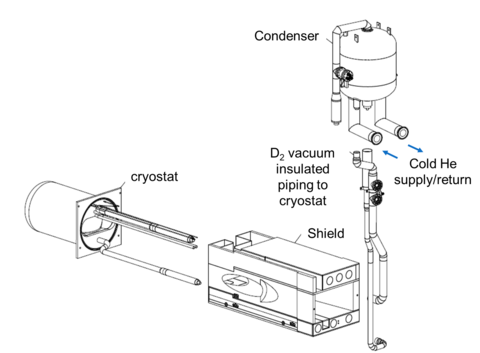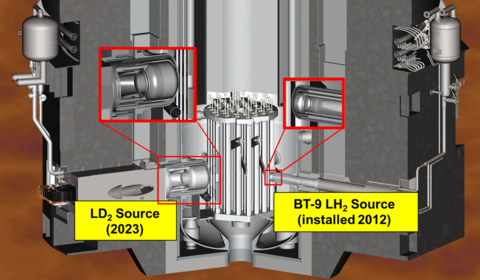The new liquid deuterium cold neutron source
A signature feature of the reactor at NIST is the large beam tube for a cold neutron source that was part of the original design. This can be seen in this photo taken before the reactor became operational.

The NIST Center for Neutron Research has built a series of cold neutron sources that take advantage of the large size of the cold source beam tube to provide cold neutrons to an extensive guide network that currently serves 22 experimental stations. The current liquid H2 cold source (referred to as Unit 2) was installed nearly 20 years ago. In 2012, the NCNR commissioned a second ℓ-H2 cold source in BT-9 which provides neutrons to MACS.
Because H has a non-negligible absorption cross-section, ℓ-H2 cold sources are designed to “under”-moderate the neutrons, i.e. Unit 2 is smaller than required for the neutrons to achieve thermodynamic equilibrium with the ℓ-H2 bath. This reduces losses due to absorption as the neutrons must make multiple collisions to become fully moderated. The absorption cross-section of D is more than 600x smaller than that of H while the scattering cross section is only about 10x smaller. This means that, while a ℓ-D2 source must have a significantly larger volume due to the smaller scattering cross-section, one can build a ℓ-D2 source where the neutrons more closely achieve full moderation. In other words, the spectrum of neutrons can be shifted towards longer wavelengths increasing the number of cold neutrons.
Over the last few years, the NCNR has been working towards the realization of an ℓ-D2 cold neutron source to replace Unit 2. The new liquid D2 source will operate at about 20 K and the volume will be 35 l compared to 5 l in Unit 2. Thus, our refrigerator was insufficient for cooling the new source. We have thus installed a new system which has been operational and cooling Unit 2 and the BT-9 cold source since 2018.

The cold source will operate as a thermosiphon. Cold He from the refrigerator will flow to a condenser placed above the ℓ-D2 cold source. The liquified D2 will flow by gravity into the cryostat where it will boil, and the vapor will return to the condenser where it will be re-liquefied and flow back to the cryostat. The deuterium gas will be stored in a ballast tank when the refrigerator is not operating. All vacuum spaces in the gas lines will be continually monitored for hydrogen. Thus, the entire system will be completely closed, with multiple barriers between deuterium and the outside world making this a very simple and intrinsically safe design.

We have purchased a prototype of the cryostat which should arrive for ex-situ testing in 2021. The new, fully optimized cryostat should arrive in the summer of 2022 and be ready for installation in 2023. The installation will require a year-long outage of the reactor in order to safely remove the old source and install the new one. The two cold neutron sources are shown in their locations in the figure below.

The new ℓ-D2 cold neutron source is partially funded by the NNSA Material Management and Minimization Program to compensate for the 10% reduction in neutron flux that will occur when the reactor is converted from HEU to LEU fuel.

